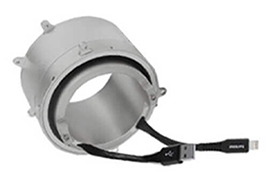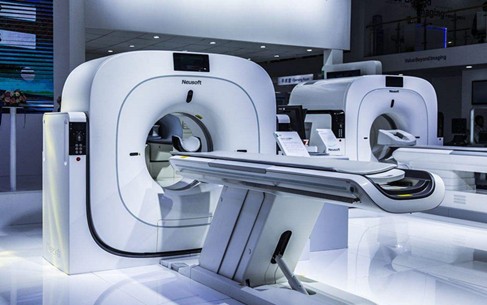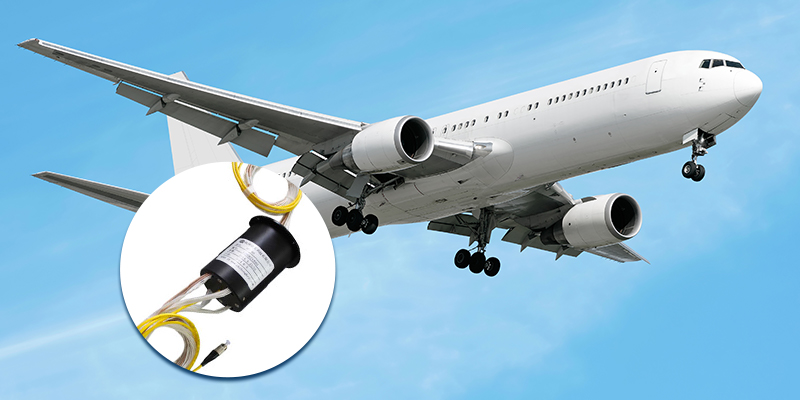In the evolving sphere of technology, devices that blend traditional principles with contemporary functionality gain an unmistakable significance. One such innovative device that stands at the intersection of the old and the new is the USB 3.0 Slip Ring. Before venturing into the depths of its importance and applications, let’s first give it a precise definition.
A USB 3.0 Slip Ring is an advanced electromechanical device that facilitates the smooth transmission of USB 3.0 protocols between stationary and rotating parts in various applications, allowing integration of USB 3.0 devices into rotating systems. Taking a direct leap from the legacy slip ring technology, it combines the high speed and efficient data transfer rates of the USB 3.0 standard, supporting rates up to 5Gbps. It embarks on features like duplex communication, high power delivery, and robust signal quality offered by USB 3.0 – making it an impressive technological evolution. From its basic concept, the ‘slip ring’ contributes to the ability to maintain electrical connectivity between devices that need to rotate around each other.
The importance and relevance of the USB 3.0 Slip Ring in the current technologically advanced era cannot be overstated. As contemporary technology leans heavily towards device interconnectivity, the demand for swift, seamless data transmission has ramped up. Enter USB 3.0 Slip Ring, capable of meeting this growing demand by leveraging superior data transfer rates while maintaining the integral function of rotation.
Further, its application extends to a spectrum of industries, including robotics, surveillance systems, medical instruments, and more. Regardless of the industry, they serve a common purpose: to ensure optimal performance, maintain high-quality data transmission, and allow dynamic, rotation-based operations.
Having thus defined and introduced the USB 3.0 Slip Ring, we will further delve into its technical intricacies, applications, and impact on the future of technology. By the end of our journey, you’ll have a comprehensive understanding of this pivotal device weaved into the fabric of modern technology.
Understanding USB 3.0 Slip Rings
Description and Functionality
The USB 3.0 Slip Ring is a distinctive device mainly designed for transmitting USB 3.0 signals between a stationary and a rotating platform. This description, while seemingly straightforward, is underlying a labyrinth of complex functionalities that the device performs, contributing to its demand in several industries.

At its core, USB 3.0 Slip Rings function as an advanced electromechanical device. They bridge the gap between stationary and rotating components in a system, ensuring a regular flow of power, signal, or data. This implies a continuous transmission, irrespective of the fact that one part of the connection stays static, while the other part is rotating.
One of the key operational aspects of the USB 3.0 Slip Ring is its utilization of the USB 3.0 protocol. The USB 3.0, or SuperSpeed USB, is a generation ahead of its predecessor, USB 2.0. It offers a data transfer rate of up to 5Gbps, that’s ten times more than the USB 2.0. This increased speed sees it fit into the demands of modern high-speed data transfer applications where large volumes of data need to be transmitted quickly and efficiently.
In addition, the USB 3.0 protocol is equipped with duplex communication, which allows data to flow in both directions simultaneously. This goes a long way in improving the overall transmission efficiency of the USB 3.0 Slip Rings. Furthermore, with robust power delivery (up to 900mA as opposed to 500mA in USB 2.0), USB 3.0 Slip Rings can support more power-hungry devices.
Regarded for its operational reliability, the USB 3.0 Slip Ring comes equipped, in many models, with gold-to-gold contact materials that will ensure long life and optimal signal integrity. As regards size, this slip ring is designed to be compact and flexible, making it possible for integration into systems with size restrictions without sacrificing performance.
In essence, the combination of a slip ring’s rotational flexibility and the advanced transfer capabilities of the USB 3.0 standard makes the USB 3.0 Slip Ring a potent tool in today’s technology landscape. Its various functionalities and specifications cater to the demands of modern tech applications that require fast data transmission while allowing for rotational movement.
Having explored the essential functionalities and technical specifications that set the USB 3.0 Slip Ring apart, we will further explore its evolution, applications, and importance in our modern technological landscape.

Evolution of USB Slip Rings (from USB 2.0 to USB 3.0)
The evolution of USB slip rings mirrors the broader technological progression that we have witnessed over the past few decades. Central to this narrative is the transition from USB 2.0 to USB 3.0 – a journey defined by substantial advancements in speed, power, and overall performance.
The leap to USB 3.0 was not merely a numerical increment but a revolutionary stride in the annals of data transfer technology. The transition signified a decisive move towards higher performance, facilitated by faster data transfer rates, enhanced power management capabilities, and greater interactive potential.
USB 2.0 slip rings have been serving an important role in enabling rotational movement while providing reliable data and signal transmission. However, the USB 2.0 standard was designed to transfer data at a rate of up to 480 Mbps. With the expansion of technology and growing data requirements, this data rate fell short of the dynamic needs of the evolving technological landscape.
Emerging in this backdrop was the USB 3.0, christened as the SuperSpeed USB. The USB 3.0 interface offers astonishingly high data transfer rates of up to 5 Gbps, ten times faster than its predecessor. This meant that USB 3.0 Slip Rings could support applications demanding high data rates without compromising on the rotation feature. What this effectively established was a new standard for applications requiring both high-speed communication and continuous rotation.
USB 3.0 also introduced improved power delivery, delivering 80% more power than USB 2.0. This allowed USB 3.0 Slip Rings to support devices with more considerable power requirements, further enhancing their applicability. Moreover, USB 3.0 supports duplex communication, paving the way for simultaneous bi-directional data transfer. This is a significant step from the half-duplex communication of USB 2.0.
Another contributing factor to the successful transition was the inherent backward compatibility of USB 3.0, allowing for seamless integration with USB 2.0 devices. This ensured users could upgrade their systems to take advantage of the superior capabilities of the USB 3.0 standard without entirely discarding their existing USB 2.0 devices.
In summary, the evolution of USB slip rings, tracking the move from USB 2.0 to USB 3.0, was a groundbreaking development that significantly enhanced their performance and application reach. In the next section, we will delve into these applications, offering a clearer perspective on the wide-ranging influences of USB 3.0 slip rings in various industry sectors.
Applications of USB 3.0 Slip Rings
USB 3.0 Slip Rings play a critical role in a wide array of applications across numerous sectors. Their ability to deliver high-speed data transfer while allowing rotational movement proves to be a game-changer in many industry verticals. Whether it’s a robotic arm in an assembly line or state-of-the-art medical equipment in a healthcare setting, USB 3.0 Slip Rings fulfill a range of crucial roles.
Robotics
One of the key application areas of USB 3.0 Slip Rings is in the field of robotics. Robotic systems often require parts to rotate endlessly without hindering the flow of power, data, or signals. This is precisely where USB 3.0 Slip Rings come in. They enable continuous 360-degree rotation of dynamic systems like robotic arms and rotary tables, all while maintaining the efficient, high-speed data transfer crucial for automation and control.

Digital Cameras
In the realm of digital photography, especially in applications like 360-degree cameras or high-speed recording devices, USB 3.0 Slip Rings are indispensable. They allow the cameras to rotate continuously while ensuring seamless, high-speed transfer of high-quality images and video files. The 5Gbps bandwidth of USB 3.0 allows for the transfer of large volumes of data in a short time, enabling real-time streaming.
Medical Equipment
USB 3.0 Slip Rings are also deeply integrated into the medical field. Advanced scanning and imaging devices, like CT and MRI machines, heavily rely on these slip rings. Their ability to facilitate a high-speed transfer of large amounts of data from rotating parts, such as the rotating gantry in a CT scanner, to stationary computer systems makes them essential for accurate and efficient diagnostic processes. Their compact size and reliability improve the overall design of such medical devices.

Apart from these, they find applications in sectors such as radar systems, where they facilitate smooth operations by allowing continuous rotation of antennae while ensuring data transmission. Moreover, they are viable in defense and aerospace applications, where they enable functionalities such as turret rotation and data transmission in UAVs.

Ultimately, the range of applications for USB 3.0 Slip Rings is vast and growing. As industries continue to advance and devise rotating mechanisms demanding fast data transmission, the relevance of USB 3.0 Slip Rings is set to further increase. With their myriad applications, they’re a pivotal part of contemporary technology that powers the efficient running of various industries, bringing about a remarkable leap in how devices interact and function.
Looking for high-quality slip rings? Complete the form below for more information.
Choosing the Right USB 3.0 Slip Ring
Key Considerations When Buying a USB 3.0 Slip Ring
Choosing the right USB 3.0 Slip Ring requires adequate knowledge about its functionalities and an understanding of the particular requirements of your application. The choice depends on a variety of factors, including the slip ring’s durability, data transmission speed, compatibility, size, operational temperatures, and rotation speed. Each of these elements significantly influences the slip ring’s performance and is therefore of paramount importance in the selection process.
Durability
The resilience of the USB 3.0 Slip Ring is a key factor to consider. You’d want a device that is reliable and can function optimally under varying operational conditions. Rings made with gold-to-gold contacts, for instance, are known for their longevity and excellent electrical performance.
Speed
One of the vital selling points of the USB 3.0 Slip Ring is its high data transfer speed of up to 5Gbps. However, the actual speed can be influenced by several additional factors, including the cable length and quality. It’s essential to assess these details before selection.
Compatibility
While USB 3.0 is backward compatible with USB 2.0, it’s still necessary to verify the compatibility of your chosen slip ring with the devices it will be integrated with. Checking the slip ring’s compatibility can prevent potential hitches after purchase.
Size
The compactness of the USB 3.0 Slip Ring also matters, particularly in applications with size restrictions. Variants are available in diverse sizes, and the ideal compact size should not compromise functionality.
Operational Temperatures
USB 3.0 Slip Rings are designed to operate under different temperature ranges. Depending on the operational climate of the intended application, suitable slip rings with appropriate temperature tolerance should be selected.
Rotation Speed
Lastly, understanding the rotation speed of the slip ring is crucial. Depending on the application, the slip ring may require to rotate at high speeds without hindering the data transfer and operational efficiency. Be sure to choose a model that supports the necessary rotation speed of your system.
By paying close attention to these factors, you can ensure that you select a USB 3.0 Slip Ring that best fits your operational requirements, leading to improved productivity and efficacy in your endeavors.
Leading Manufacturers and Suppliers of USB 3.0 Slip Rings
When choosing a USB 3.0 Slip Ring, it’s essential to consider reputable and reliable manufacturers that have established themselves as industry leaders. A wide variety of providers serve this market, but some brands have consistently delivered high-quality and durable slip rings that cater to the diverse needs of various applications. In this section, we introduce a few reputed brands and manufacturers that specialize in producing USB 3.0 Slip Rings.
| No. | Manufacturer | Website |
|---|---|---|
| 1 | Hangzhou Grand Technology | https://www.grandslipring.com/ |
| 2 | Moog Inc. | https://www.moog.com/ |
| 3 | Stemmann-Technik | https://www.stemmann.com/en/home |
| 4 | Schleifring | https://www.schleifring.com/ |
Hangzhou Grand Technology

Hangzhou Grand Technology Co., Ltd. started as a special slip ring manufacturer in 2011. Grown into slip rings, rotary joints, and slip ring assembly experts of today with 6,000 square meter manufacture complex.
Obtained ISO9001, Rosh, CE, and GJB9001B certificates a number of slip rings, rotary joint patents, and proud of our products can meet military grade. Collaborated with universities, institutes, and renowned factories across Asia and Europe including Panasonic, SIEMENS, CSIC, SAMSUNG, HUAWEI, etc.
Moog Inc.
Moog is a leading supplier of high-performance slip rings for various industries, including aerospace. Among their offerings, Moog’s SR Series Slip Rings are designed for the demanding environments of helicopters, excelling in performance, reliability, and customization potential.
Stemmann-Technik
Stemmann-Technik, a part of the Conductix-Wampfler Group, offers a broad range of slip rings, including solutions for helicopters. Their Livietta Slip Ring Assemblies are designed explicitly for harsh and demanding environments in the aviation sector, providing reliable signal and power transmission.
Schleifring
Schleifring is a well-known manufacturer of electromechanical systems, including slip rings customized for various industries. Their Aircraft Slip Rings cater specifically to helicopters, offering robust performance, low wear, and high reliability to meet the challenges of aviation applications.
If you want to know more about other slip ring manufacturers, you can read Top 10 Slip Ring Manufacturers in China, Top 10 Slip Ring Manufacturers In the USA Market 2023, and Top 10 Slip Ring Industry Key Manufacturers 2023.
These are only a few of the numerous providers in the market, but they have demonstrated their ability to deliver reliable and innovative USB 3.0 Slip Ring solutions. When selecting the right slip ring for your specific needs, it’s important to evaluate not just the reputation of the manufacturer but also the compatibility, performance, and suitability of the slip ring for your application. Taking these factors into account will ensure you make an informed decision when purchasing a USB 3.0 Slip Ring.
Future Trends and Expectations
Advancements and Future Trends in USB 3.0 Slip Rings
The technology behind USB 3.0 Slip Rings continues to evolve in response to the growing demand for sophisticated systems that actuate continuous rotation while ensuring high data transfer speeds. Looking into the future, there are several potential advancements, technological improvements, and market trends worth considering in the realm of these vital components.
Enhanced Data Transfer Speeds
One primary area of innovation in the foreseeable future is possibly further enhancing the data transfer speed. Although USB 3.0 already delivers high-speed data transfer (up to 5Gbps), the growing demand for real-time data transfer in various applications may push manufacturers to develop models that offer even higher speeds. This could lead to even more fluid and efficient data transmission in applications like robotics, digital cameras, and medical equipment.
Compact and High-Density Designs
As devices become increasingly smaller and more compact, it’s quite likely that the sizes of USB 3.0 Slip Rings will follow suit. Manufacturers might come up with even more compact, high-density designs that can easily integrate into smaller devices without compromising the efficiency and reliability of performance.
Wide Range of Compatibility
Over time, expect to see USB 3.0 Slip Rings compatible with a wider range of devices and systems. Technological advancements might aim to make these components as universal as possible to cater to various complex applications in numerous sectors.
Durable and Environmentally Robust Designs
The evolution of USB 3.0 Slip Rings could also bring about versions that can withstand more extreme environmental conditions. These might include designs that are resistant to vibrations, shock, high temperatures, or corrosive environments. Such advancements could open doors to more robust applications in sectors like space exploration, defense, and heavy industries.
Market Trends
According to a Future Market Insights report, the slip ring market is expected to witness substantial growth over the coming decade, driven by advancements in technology and wide-scale applications of these components. The predominant market trend for slip rings includes growth in demand from the wind power industry and the increase in deployment of slip rings in several sectors such as aerospace, defense, and industrial automation.
As technology continues to grow and evolve, it’s quite evident that the potential gains within USB 3.0 Slip Ring technology are immense. With every new advancement, these devices will continue to improve, catering to a wider array of applications and fulfilling the demands of industries that focus heavily on automation, and data-intensive operations.
Challenges and Solutions in the Adoption of USB 3.0 Slip Rings
As much as the USB 3.0 Slip Ring continues to find a wide range of applications and novel improvements, some challenges need to be faced. End-users and decision-makers must understand these hurdles and seek out potential solutions to ensure seamless integration and functioning of these essential components.
High Costs
One of the significant challenges is the comparatively high cost of these slip rings. High-quality and advanced features often come at higher prices, which can be a barrier for budget-constrained applications.
Solution: Developed economies could provide research grants and subsidies to drive adoption. Also, as with many technological advancements, prices are likely to come down over time as the technology becomes more widespread and economies of scale are achieved.
Complex Installation and Maintenance
The installation and maintenance of USB 3.0 Slip Rings can be a challenge due to their complexity. Users need to understand specific configurations and demands to maximize the product’s lifespan.
Solution: Manufacturers could provide clear guidelines, training, and user-friendly interfaces to allow users with little technical knowledge to handle the installation and maintenance more accurately and comfortably.
Limited Compatibility
Certain older systems and devices may face compatibility issues with USB 3.0 Slip Rings, thereby limiting potential applications.
Solution: Manufacturers are constantly working on improved and universal design considerations to ensure maximum device compatibility. At the end user’s level, there may occasionally be a need to upgrade certain system components for compatibility with cutting-edge technology like USB 3.0 Slip Rings.
Potential Durability Concerns
Although modern slip rings are designed to be durable, cases of premature wear, especially in highly demanding applications, can still present a challenge.
Solution: Advances in material science and engineering could lead to even more robust and long-lasting slip ring designs. Moreover, regular maintenance and rigorous testing can help to extend the product’s lifespan.
Despite these challenges, the numerous advantages offered by USB 3.0 Slip Rings make it a worthy candidate for a wide array of applications. Advancements in technology and proactive solution-seeking can help overcome these hurdles, allowing for more efficient and wide-scale deployment of this technology. It is indeed a fascinating time for industries that rely on such high-tech devices, offering an exciting glimpse into what the future might hold.
Conclusion
To sum up, USB 3.0 Slip Rings underscore a pivotal component in modern technology. By marrying rotating functional attributes with high-speed data transfers, they suit the demands of numerous applications while paving the way for an exciting technological future.
See What We Can Do
